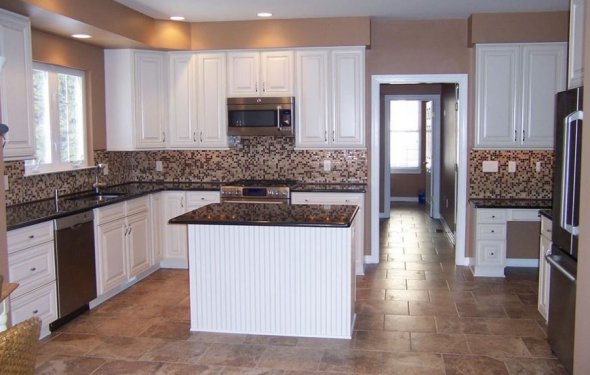Keramic Plate For Kitchen Walls

 In our age of modern technology, it is quite difficult to understand all types of construction and scattering materials and to decide what to choose. People make choices based on different aspects - quality, price, aesthetic appearance and performance. This article for those who cannot decide what is best, is a ceramogrand or a stove, which difference between these coats and where they are better used.
In our age of modern technology, it is quite difficult to understand all types of construction and scattering materials and to decide what to choose. People make choices based on different aspects - quality, price, aesthetic appearance and performance. This article for those who cannot decide what is best, is a ceramogrand or a stove, which difference between these coats and where they are better used.
The ceramic and ceramolimitation plate is two of the most common material with high aesthetic, strength, life, mechanical and chemical sustainability. The ceramo-border stove appeared as an alternative to the ceramic stove and was originally constructed for production and public premises. The materials for them should be particularly resistant to the truth because of the high flow of people and the use of technology. The stove shall be pressed by clay (for which only two special classes are applied) at a pressure not less than 500 kg/cm2, and then burned at a temperature of not less than 1,330 degrees C.
The stove shall be pressed by clay (for which only two special classes are applied) at a pressure not less than 500 kg/cm2, and then burned at a temperature of not less than 1,330 degrees C.
The ceramic stove is also made of clay with mineral additives. The prepared plug is one of several ways - extruding, press, slicing, lithium. On the outlet, material is strong and stable to mechanical and chemical effects. Compared to the ceramo-green, it's fragile and not so tight. Which means he's got elevated (compared to the ceramo limit) moisture absorption. If you compare the aesthetic opportunities that offer Ceramic and ceramic platethe ceramic for all the indicators remains winning.
Over the past 15-20 years, not only the technical ceramo-border plug, as has been the case, but add and decorate components, but the finished plugs and structure. The material is amazingly beautiful, reminds me of the natural stone. But the ceramic stove is still much more diverse in color and structure.

